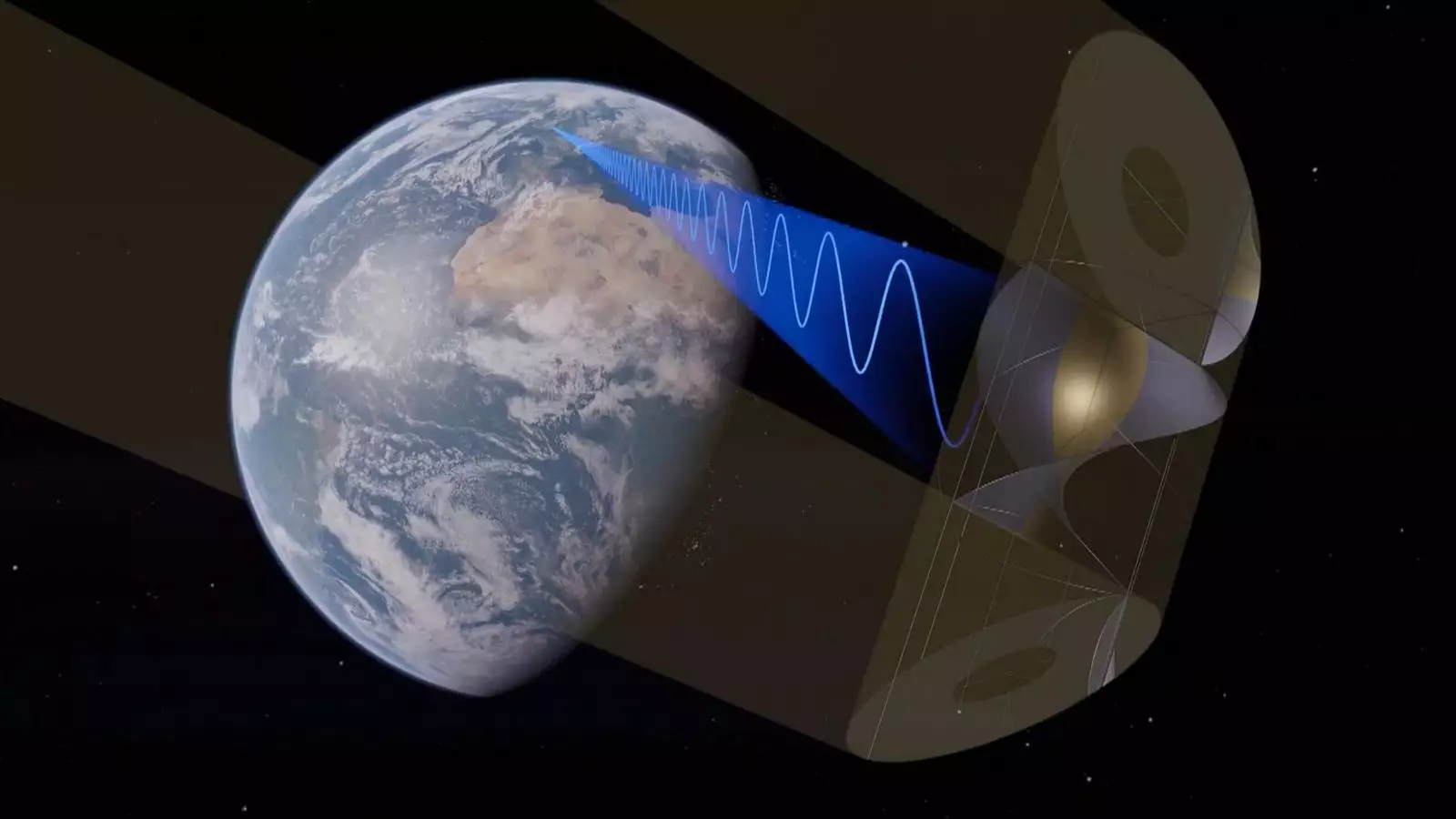Space Solar, a company based in Oxfordshire, is on a mission to launch the first solar farm into space. Their ambitious goal is to power over a million homes by the 2030s using a massive complex of mirrors and solar panels that will orbit 22,000 miles above the Earth. The key to their super-efficient design, known as CASSIOPeiA, is the ability for the system to rotate towards the sun at all times while still beaming power to a fixed receiver on the ground. Recently, at Queen’s University Belfast, the company successfully demonstrated the wireless beaming of power across a lab to light up a bulb. This breakthrough marks a significant step forward for Space Solar and its founder, Martin Soltau, described it as a world first with the potential to revolutionize our future energy systems.
Solar panels in space are capable of capturing 13 times more energy than those on the ground due to higher light intensity and the absence of atmospheric interference like clouds or night. This increased efficiency, coupled with the ability to generate power around the clock, makes space-based solar energy an attractive option for providing a consistent “baseload” to support ground-based renewables. Traditional baseload sources like nuclear and gas turbines come with environmental drawbacks such as radioactive waste and carbon emissions. Space-based solar power offers a cleaner and more sustainable alternative that is not only efficient but also cost-effective, with electricity costs estimated to be a quarter of that from nuclear power.
Until recently, the idea of constructing a 2,000-tonne solar power station in space seemed like science fiction. However, Space Solar is in discussions with SpaceX to utilize their Starship rocket for the ambitious project. The Starship rocket, known for its unprecedented capabilities, could significantly reduce the costs associated with launching payloads into orbit, making space-based solar power more feasible than ever before. The prospect of assembling a solar power station in orbit using robots and multiple rocket launches represents a paradigm shift in space technology. Martin Soltau emphasized the transformative impact of these advancements, stating that they open up new possibilities that were previously unattainable.
One potential challenge facing space-based solar power is addressing public concerns about the safety of beaming microwave power back to Earth. Martin Soltau reassured the public that the energy levels of the microwave beam would be minimal compared to the midday sun at the equator and that proper safety protocols would be in place to ensure the protection of the population. Additionally, efforts would be made to locate receiving antennas away from densely populated areas, most likely offshore. Dr. Jovana Radulovic, an independent energy expert, highlighted the need for more evidence to support claims about the low carbon footprint of space-based solar power, particularly in relation to the environmental impact of multiple rocket launches. While the emissions may be equivalent to those of renewable energy sources, potential pollution effects in the upper atmosphere must be carefully considered and mitigated.
The future of energy appears to be heading towards the stars with the development of space-based solar power. Space Solar’s revolutionary technology has the potential to transform the way we harness and utilize solar energy, offering a sustainable and efficient alternative to traditional power sources. As the company continues to make strides towards launching the first solar farm in space, overcoming challenges and addressing concerns will be crucial in ensuring the success and widespread adoption of this groundbreaking technology.


Leave a Reply